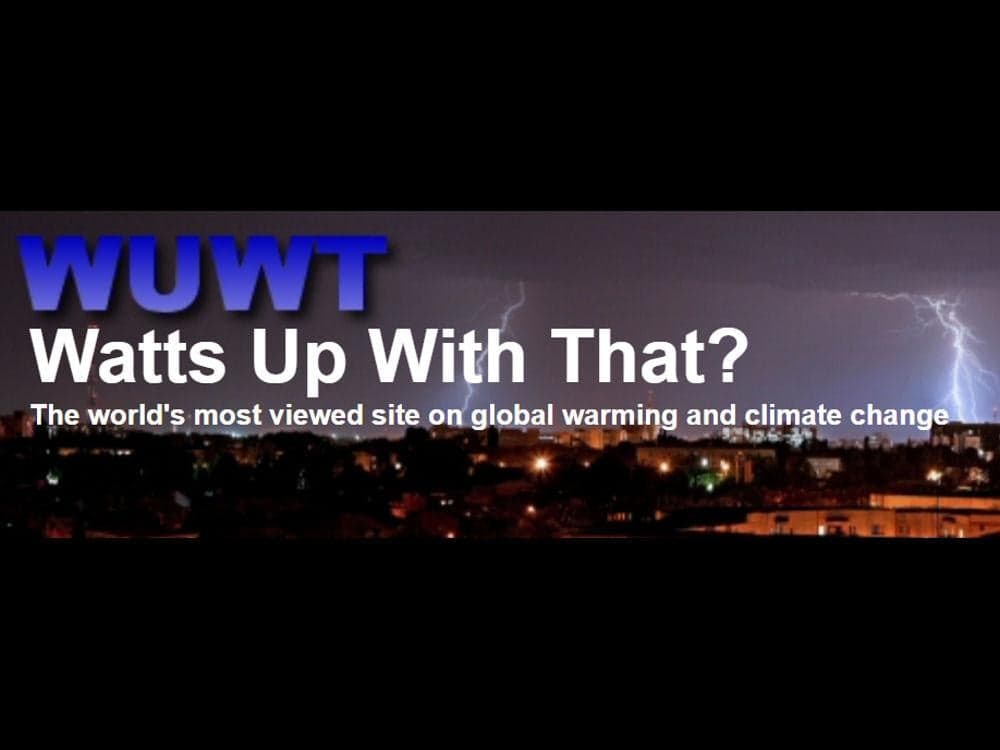From: Watts Up With That
By: Rupert Darwall
Date: December 13, 2024
Stern’s Climate Lesson for the Trump Administration
“The 2015 Paris climate should take its place as one of the great triumphs in history,” Jonathan Chait wrote two days after it was concluded. Todd Stern, America’s climate envoy for all but eight months of Barack Obama’s presidency, was indispensable in making the Paris agreement happen. With his new book, Landing the Paris Climate Agreement: How It Happened, Why It Matters, and What Comes Next (MIT Press, October 2024), Stern has written an indispensable history of the genesis, the whys, and the wherefores of the Paris agreement, indispensable both to supporters and critics and therefore for members of the incoming Trump administration as they consider, for a second time, future American participation in the agreement.
Stern’s account starts with the run-up to the 2009 Copenhagen climate conference. Stern knew what needed to be done. The firewall in the original United Nations Framework Convention on Climate Change (UNFCCC), signed at the Rio Earth Summit in 1992, had to be erased and a treaty text produced that wouldn’t be sent to the United States Senate for its advice and consent.
Stern had witnessed the Senate’s preemptive rejection of the 1997 Kyoto Protocol because the UN firewall protected China and other major developing countries from future treaty requirements to cap their emissions. This goal was initially opposed by the Europeans, who wanted to bounce the U.S. into a legally binding climate treaty that he knew would fail and premised on the delusory belief that developing countries would follow if the developed world led by example.
Stern had an ally in the Danish conference hosts, who wanted a short, legally nonbinding agreement. The longtime British climate negotiator, Pete Betts, had also suggested that countries should submit their own national plans as part of a new agreement, rather than negotiating emissions targets and inking them into a treaty. But a quartet of China, India, Brazil, and South Africa moved to block any agreement that set a goal for agreeing to a legally binding treaty. “They were not prepared to take the risk that a legally binding agreement would bind them,” Stern writes.
The Copenhagen conference of the parties (COP) is usually portrayed as a disaster. It ended in near-chaos, when a handful of South American countries blocked the conference from adopting the two-and-a-half-page Copenhagen Accord and only just succeeded in “taking note” of it. Stern challenges this assessment. The U.S. side never saw Copenhagen as a failure, he says. “We knew that the accord was an important document that it began an essential pivot away from the old firewall paradigm and was a potentially significant step forward.”
The next COP was in Cancún. “If Copenhagen was cold and gray with wet snow … Cancún was the opposite. The air was soft and warm, the sky was blue, the Gulf of Mexico lapped the edges of the beach,” Stern recalls. Stern’s aim was to embed the Copenhagen Accord in the process, while China did its best to kill it. A European colleague summed up the dilemma: the U.S. would not accept the firewall between developed and developing countries, but China and its allies would not give it up.(continue reading)
Stern’s Climate Lesson for the Trump Administration
